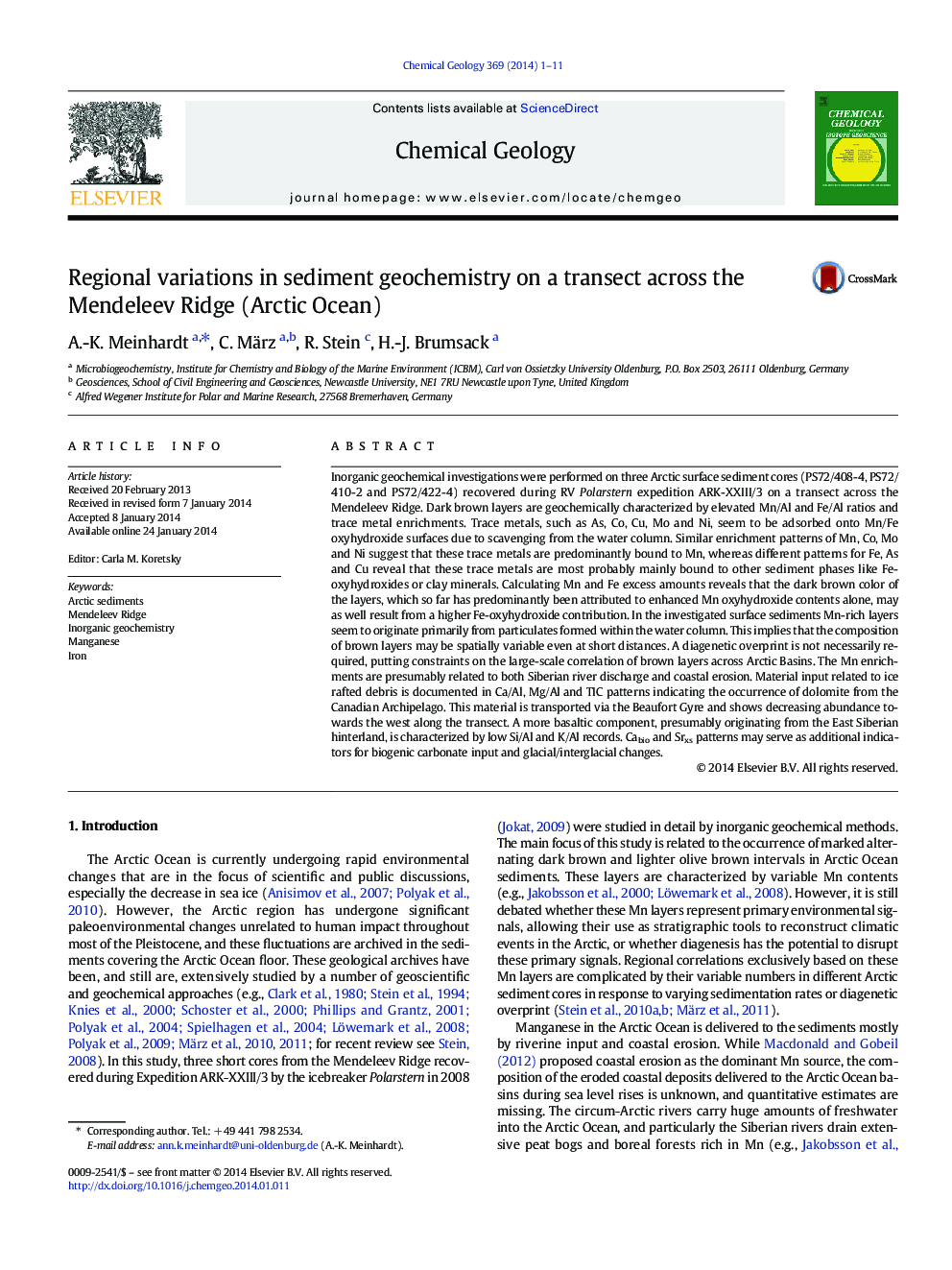| کد مقاله | کد نشریه | سال انتشار | مقاله انگلیسی | نسخه تمام متن |
|---|---|---|---|---|
| 6436669 | 1637601 | 2014 | 11 صفحه PDF | دانلود رایگان |
- Mn and Fe are equally enriched in surface sediments.
- Dark brown layers seem to be formed primarily within the water column.
- Calculated Cabio contents serve as indicator for biogenic carbonate input.
- Dolomite input is documented in Ca/Al, Mg/Al and total inorganic carbon records.
Inorganic geochemical investigations were performed on three Arctic surface sediment cores (PS72/408-4, PS72/410-2 and PS72/422-4) recovered during RV Polarstern expedition ARK-XXIII/3 on a transect across the Mendeleev Ridge. Dark brown layers are geochemically characterized by elevated Mn/Al and Fe/Al ratios and trace metal enrichments. Trace metals, such as As, Co, Cu, Mo and Ni, seem to be adsorbed onto Mn/Fe oxyhydroxide surfaces due to scavenging from the water column. Similar enrichment patterns of Mn, Co, Mo and Ni suggest that these trace metals are predominantly bound to Mn, whereas different patterns for Fe, As and Cu reveal that these trace metals are most probably mainly bound to other sediment phases like Fe-oxyhydroxides or clay minerals. Calculating Mn and Fe excess amounts reveals that the dark brown color of the layers, which so far has predominantly been attributed to enhanced Mn oxyhydroxide contents alone, may as well result from a higher Fe-oxyhydroxide contribution. In the investigated surface sediments Mn-rich layers seem to originate primarily from particulates formed within the water column. This implies that the composition of brown layers may be spatially variable even at short distances. A diagenetic overprint is not necessarily required, putting constraints on the large-scale correlation of brown layers across Arctic Basins. The Mn enrichments are presumably related to both Siberian river discharge and coastal erosion. Material input related to ice rafted debris is documented in Ca/Al, Mg/Al and TIC patterns indicating the occurrence of dolomite from the Canadian Archipelago. This material is transported via the Beaufort Gyre and shows decreasing abundance towards the west along the transect. A more basaltic component, presumably originating from the East Siberian hinterland, is characterized by low Si/Al and K/Al records. Cabio and Srxs patterns may serve as additional indicators for biogenic carbonate input and glacial/interglacial changes.
Journal: Chemical Geology - Volume 369, 13 March 2014, Pages 1-11
